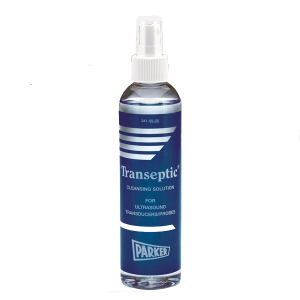We use cookies to make your experience better. To comply with the new e-Privacy directive, we need to ask for your consent to set the cookies. Learn more.
Tristel DUO - High Level Chlorine Dioxide Disinfectant Foam for Ultrasound Probes
- Cleaner and Disinfectant in One
- Alcohol Free and Bleach Free
- Unique Chlorine Dioxide Foam Chemistry
- EPA Approved
In Stock
Tristel DUO is a chlorine dioxide (ClO2) foam for the disinfection of non-invasive ultrasound transducers, transducer holders, cables, keyboards, and ultrasound stations.
Tristel DUO can be used on hard non-porous surfaces of other medical devices, for example colposcopes, mammography compressor plates, dialysis machines, and blood pressure cuffs.
Precise and fast
Tristel DUO is delivered in a novel dosing bottle. Tristel DUO Part A (sodium chlorite) and Part B (citric acid) are mixed when dispensed to generate 320 ppm chlorine dioxide. Each press of the pump delivers a consistent dose of chlorine dioxide foam, ensuring each patient receives the same level of protection.
Tristel DUO is effective in a maximum contact time of 2 minutes, cutting reprocessing time in more than half and allowing you to see more patients. In contrast, many commonly used pre-wetted wipes and sprays need as long as 10 minutes to be effective.
Compact and convenient
Tristel DUO is compact and can follow the ultrasound probe, enabling quick device decontamination at the point of care. Compact design is not synonymous with small: each Tristel DUO bottle delivers approximately 310 doses of chlorine dioxide foam.
Tristel DUO foam can be spread on a surface using a variety of dry wipes, allowing the user the convenience of choice.
Due to its compact size and portability, Tristel DUO is easy to implement in a wide variety of areas where ultrasound is performed.
Chemistry
Tristel DUO utilises Tristel’s proprietary chlorine dioxide formulation. The chemical symbol for chlorine dioxide is ClO2.
ClO2 is a powerful oxidizing agent that packs a punch. It destroys pathogens via electron exchange, sequestering electrons from the microorganism’s vital structures such as cell walls, membranes, organelles, and genetic materials. This causes a molecular imbalance leading to the microorganism’s death. This mode of action makes ClO2 highly effective, even at low concentrations.





